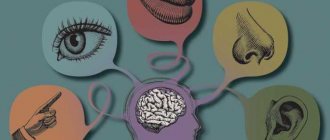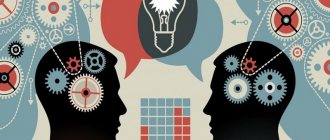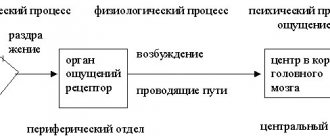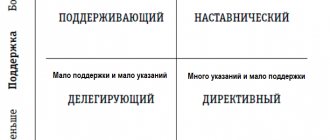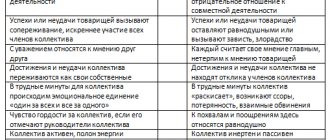Meaning of Perception
The sense organs are conductors and intermediaries between man and the outside world. It is they (visual, auditory, olfactory, tactile, gustatory) that provide a holistic perception of the environment, receiving irritant signals on the receptor surfaces. As a result, a person receives a complete understanding of objects and phenomena, their properties and qualities, and builds his “relationships” with them.
In addition to sensations, the perception of the world is provided by thinking, speech, memory, therefore the perceptual activity of an individual is a complex cumulative process that depends on many individual properties of his psyche.
Properties of perception
Perception ensures the functioning of various mental processes.
The perception of an object as a specific image, regardless of its location, provides such a property of perception as objectivity.
Simultaneously with the perception of an image (natural or, for example, drawn), its properties are also reproduced in consciousness.
- Such a property as integrity is expressed in the fact that an object is recognized regardless of whether all its parts are present, whether they are distorted, or whether their location in the object is incorrect.
- The meaningfulness of perception during the normal functioning of the human psyche can be traced in the fact that the observed object is correlated with a specific class, category (classified).
- Observed objects (or situations) are perceived as unchanged, even if the conditions of their demonstration change. So, for example, by feeling an object in complete darkness, a person can correctly determine what it is and name its main characteristics. This property of perceptual activity is called constancy.
- This property of perception, such as structure, allows you to perceive the environment reliably, even if sensations are not connected. The expression “glass surface of a lake” paints a specific image of a perfectly smooth, shiny, bluish-greenish surface of a reservoir.
- The individual state of mind necessarily influences perception: stormy weather delights some, but frightens others immensely and creates a state of panic. This property of perception is called apperception.
- Perception depends on the conditions in which it occurs. The perception of the same thunderstorm in a real situation and, for example, when watching a movie, will occur differently, which is where such a property of perception as contextuality manifests itself.
Background of management science
The English term “manadgement” (from the Latin manus - hand) has no analogue in the Russian language, although it is often used as a synonym for the concepts of “management” and “scientific organization of labor”.As a social phenomenon and sphere of human practice, management arose long before it became the subject of scientific research. People have the ability and need to work together, and this requires coordination of their actions, coordination, cooperation, i.e. management of joint activities.
In Ancient Egypt, thousands of years BC, the need for planning, organization, control, and centralization of management processes was recognized. Without this, it would have been impossible to create such grandiose architectural structures as the Egyptian pyramids, ancient Aztec cities, or the successful functioning of such complex and branched religious organizations as, for example, the Roman Catholic Church. Gradually, the prerequisites for the emergence of theoretical ideas about the forms and methods of organizing management begin to take shape. As an independent scientific discipline, management theory took shape only at the beginning of the 20th century, repeating the fate of the development of psychology.
The general picture of the evolution of management thought and its main stages is illustrated by the concept of “managerial continuum” (according to K. S. George); it highlights those events that brought revolutionary changes to ideas about management. Such events are considered: 1) the formation of a special kind of “priest-businessmen” who were engaged in trade operations; 2) publication by King Hammurabi (XXVIII century BC) of a set of laws regulating relations between social groups of the population; 3) the unification by Nebuchadnezzar II (VII century BC) of methods of government administration and control over the spheres of construction and production; 4) industrial progress of European civilization in line with emerging capitalism (XVII-XVIII centuries), as a result of which professional management arises; 5) “bureaucratic* revolution” that occurred at the turn of the 19th and 20th centuries.
At the same time, management theory emerged as an independent discipline. Its development is primarily an evolutionary process, despite the importance of the noted revolutionary transformations. It is continuous and affects all changes in society: socio-political, industrial, economic and many others. One example of such an impact is the emergence of cameralism, a kind of descriptive administrative discipline regulating management practice. It promoted the separation of administrative management from judicial proceedings, further dividing into the science of administrative management and the science of administrative law.
The process of development of management science is accompanied by internal contradictions that hinder the development of management theory. Factors contributing to this development are associated with the intensive development of production, with the search for ways to improve and intensify it as the basis for increasing profits. Knowledge of all these reasons is necessary for a correct understanding of the history of the development of management science. Only the last decades have become the most fruitful stage in the development of her theory, although this could have been expected many years ago, given the importance of this issue.
For centuries, commercial activity was not respected and was considered a humiliating activity. Aristotle called buying and selling “the unnatural making of money.” The negative attitude towards such activities turned out to be very persistent, reaching our time. This is one of the reasons for the slowdown in the progress of management thought. Another reason is that scientists involved in economic and social sciences neglected the study of administrative management issues in their research, limiting themselves to economic issues of production and political aspects. There are also difficulties in using data from other sciences, particularly psychology, to improve management. For a long time, management was considered only an art, but not a science. The attention of the managers themselves was directed to such concepts as “technology”, “price”, “profit”. The emergence of specialists in the field of management theory and the recognition of their important and independent role in the organization of production would mean limiting the power of the owners of these organizations, entrepreneurs, which, of course, did not suit them.
A breakthrough in the formalization of management theory was the publication of F. Taylor’s book “Principles of Scientific Management” (1911). Taylor is considered the founder of scientific management. The emergence of management as a science was a response to the needs of big business, an attempt to take advantage of modern technology, and the achievement of a small group of inquisitive people seeking to discover the most efficient ways of doing work.
The nature of the perception process
The external environment and its individual objects and phenomena influence the senses through analyzers. Their complex interaction ensures the flow of information into the brain centers and its processing.
Complex analysis and synthesis of external data ensure the creation of a holistic image: external and hidden, internal properties and qualities of the object are determined. That is, a number of its characteristics are formed.
The process of perceiving the same object is unique, as is its mental image, since they depend on the individual mental and physiological characteristics of a person. Life principles, views, motives, interests, preferences as the results of upbringing and lifestyle certainly determine the assessment of the properties and qualities of an object. For example, the same work of art can be emotionally assessed by different observers as “strikingly beautiful” and… “disgusting.”
Physiological mechanisms of perception
The physiological mechanism of perception is the complex analytical and synthetic activity of analyzers. Since the relationships between the parts and properties of an object are established in the process of perception, one of the physiological mechanisms of perception is the formation of conditioned reflexes to the relationships. When the analyzer is constantly influenced by a system of stimuli operating in a certain sequence, the reaction begins to depend not on one stimulus, but on the specifics of the relationships of the stimuli, their correlations. I.P. Pavlov discovered the reflexive foundations of perception. He showed that perception is based on conditioned reflexes, that is, on temporary nerve connections formed in the cerebral cortex of the cerebral hemispheres under the influence of receptors of objects or phenomena of the surrounding world. The latter act as complex stimuli, since complex processes of analysis and synthesis occur in the nuclei of the cortical sections of the analyzers during the processing of the excitation caused by them. From a practical point of view, the main function of perception is object recognition, i.e. their assignment to one category or another: this is a car, this is a dog, these are berries, etc. Same with recognition. So what is recognition and what are its mechanisms? Having recognized objects, we can draw conclusions about many hidden properties of the object. If it is a car, then it is made of iron and can be driven. If it is a dog, it can perform security functions. So if it does something wrong, etc., it can haunt people. Therefore, recognition is what allows us to go beyond the sensory representation of the properties of objects.
Today it is customary to distinguish several stages in the process of object recognition, some of which are preliminary, others are final. In the preliminary stages, the perceptual system uses information from the retina and describes an object in terms of elementary components such as lines, edges, and corners. At the final stages, the system compares this description with the description of the shapes of various types of objects stored in visual memory, and selects the most suitable one for it. During the recognition process, most of the information is inaccessible to consciousness at both the preliminary and final stages of recognition. The result of perception is a sensation (for example, a feeling of brightness, volume, salinity, pitch, balance, etc.), while the result of perception is an image, which includes a complex of various interrelated sensations attributed by human consciousness to an object, phenomenon or process.
In order for an object to be perceived, it is necessary to carry out response activities in relation to this object, aimed at its study, construction and refinement of the image. One of the most important physiological mechanisms of perception is the formation of a dynamic stereotype, as well as the establishment of conditioned reflexive connections between analyzers. The image formed as a result of the perception process involves interaction and coordinated work of several analyzers at once. Depending on which of them works more actively, processes more information, receives the most important signs indicating the properties of the perceived object, there are different types of perception. Human perception is always associated with the activity of the second signal system (speech). A person does not simply look at objects and react passively to them. By identifying and combining the most significant of them, he always designates the perceived objects with a word and thus gains a deeper knowledge of their properties. With the help of words, perceived objects acquire meaning.
The structure of perceptual action
Any process consists of individual operations - actions. The quality of the result depends on whether they are arranged in the correct sequence and performed without errors.
The process of perception includes a number of perceptual actions, this is due to the fact that a person needs:
- Consciously select information that is significant for him from the multitude that comes through sensory channels.
- Transform it in accordance with your own business objectives.
Perceptual action is several operations to transform sensory information.
Detection—detects the presence of a cognitive stimulus.
Discrimination - a perceptual standard is formed.
Next, the identification process takes place based on such actions as comparison and identification. The received image is compared with the one in memory and belongs to a certain class of objects, that is, it is categorized.
Mastering perceptual actions is a very difficult and lengthy process for a person, requiring special training.
When and how are perceptual skills formed?
The development of perceptual actions guarantees a person a full knowledge of the world around him and maximum adaptation to it. Sensory perception of objects, actions with them, observations expand and improve, replenish the personal experience of the individual.
The formation of perceptual actions begins in children at 2-3 years of age. Senior preschool age and school age are particularly important periods in this regard. The development of children's perceptual actions occurs in the conditions of specially organized systematic and consistent classes in kindergarten and school.
Children, under the guidance of educators and school teachers, discover the objective world for themselves, becoming acquainted with various objects and their properties, learning to analyze them, identifying the most significant ones, which become sensory standards. They are complemented by a system of motor, or motor, skills, which provides the child with a comprehensive “discovery of the world.” Modeling (drawing, manual labor, playing with building materials) allows you to transform mental images into real ones.
Sensation as a sensory-perceptual process
A person’s knowledge of the world around him begins with sensations, which are the beginning of this knowledge.
Finished works on a similar topic
Course work Sensory-perceptual process 450 ₽ Abstract Sensory-perceptual process 220 ₽ Test paper Sensory-perceptual process 200 ₽
Receive completed work or specialist advice on your educational project Find out the cost
Definition 3
Sensation is a mental cognitive process of reflecting individual properties and qualities of an object in the human mind.
Sensations directly affect the sense organs, through which information about the human environment enters the cerebral cortex. Thanks to sensations, the main external characteristics of an object are reflected - size, shape, color, sound, taste, muscle sensations, etc.
Sensations differ from each other in their quality, intensity, and sensual tone. The physiological basis of sensations is made up of analyzers and their activities. Analyzers consist of perceptive receptors, conducting receptors and central cortical sections of analyzers that process nerve signals coming from the receptors.
Sensations have certain properties - contrast, sensation thresholds, adaptation, sensitization, consistent images.
The contrast is that weak stimuli increase sensitivity, while strong ones decrease it. As for the threshold of sensations, the lower its value, the higher the sensitivity of this analyzer. The absolute threshold of sensations varies among people, and the upper threshold is the maximum value of the stimulus, above which the sensation is no longer perceived.
The discrimination threshold is the minimum difference in intensity of homogeneous stimuli that can be felt. With prolonged exposure to stimuli, the sensitivity of the analyzers may increase or decrease, which is an adaptation.
With increased excitability of the cerebral cortex, the sensitivity of the analyzers may increase under the influence of the activities of other analyzers. This phenomenon is called sensitization. For example, tasters have increased senses of smell and taste.
The continuation of the sensation can be observed when the action of the stimulus ceases, because the receptors are still in a state of excitement for some time - these are sequential images, for example, after a boat trip, a person will still feel rocking for some time.
Sensations based on the nature of the action of the stimulus on the receptors are:
- exteroceptive,
- interoceptive,
- proprioceptive.
Exteroceptive sensations include visual, auditory, taste, tactile and temperature sensations.
Interoreceptive sensations are sensations of pain, balance, acceleration, i.e. they reflect the state of the internal organs.
Proprioceptive sensations, or musculomotor sensations, reflect the movement of the human body. With their help, a person receives information about the position of the body in space, about contraction, stretching, and relaxation of muscles. These sensations are quite complex.
Note to parents
Forming a system of perceptual actions in a child is primarily the concern of parents. Firstly, they need to closely monitor the health of the baby’s sensory organs, otherwise their insufficient functioning will make it difficult to perceive the features of objects of cognition. Secondly, one should not rely only on educators and teachers: the development of perceptual actions is one of the goals of family education in the early stages of a child’s life. To do this, we need to help him thoroughly examine objects (what they sound like, how they are structured, what parts they are made of, what they feel, taste and smell), teach him how to operate them, and enrich his vocabulary with nouns (what is this?), adjectives (which one? ), verbs (what does it do?).
Children should be shown pictures and techniques of drawing, modeling, design, and practice comparing objects according to different parameters.
The main method of teaching toddlers and young children is play. Children love playing and doing activities together with their parents. Emotional substantive communication with them stimulates the child’s development of perceptual actions.
